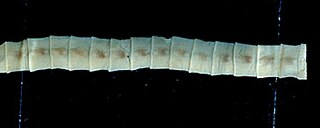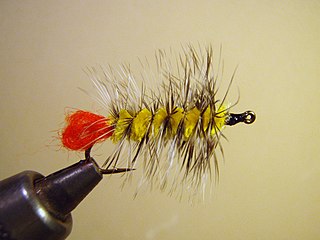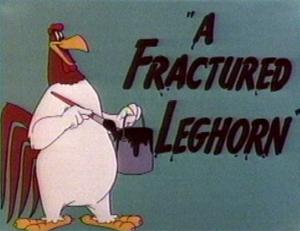
Acanthocephala is a phylum of parasitic worms known as acanthocephalans, thorny-headed worms, or spiny-headed worms, characterized by the presence of an eversible proboscis, armed with spines, which it uses to pierce and hold the gut wall of its host. Acanthocephalans have complex life cycles, involving at least two hosts, which may include invertebrates, fish, amphibians, birds, and mammals. About 1420 species have been described.

The European eel is a species of eel, a snake-like, catadromous fish. They are normally around 60–80 cm (2.0–2.6 ft) and rarely reach more than 1 m, but can reach a length of up to 1.5 m in exceptional cases.

Diphyllobothrium is a genus of tapeworms which can cause diphyllobothriasis in humans through consumption of raw or undercooked fish. The principal species causing diphyllobothriasis is D. latum, known as the broad or fish tapeworm, or broad fish tapeworm. D. latum is a pseudophyllid cestode that infects fish and mammals. D. latum is native to Scandinavia, western Russia, and the Baltics, though it is now also present in North America, especially the Pacific Northwest. In Far East Russia, D. klebanovskii, having Pacific salmon as its second intermediate host, was identified.
The Texas rig is a fishing rig used for angling with soft plastic lures. It involves a bullet-shaped weight being threaded onto the fishing line first, that can be followed by a glass or plastic bead, and then the line is secured to a fish hook, usually an offset worm hook. The hook is then inserted into the head region of a worm lure and exits about 1⁄4 inch (6.4 mm) down the worm. The worm is then moved up the hook towards the shank and then rotated so that the worm is now "locked" on the shank. The point of the hook is then threaded back into the body of the worm to make the rig "weedless".

The European perch, also known as the common perch, redfin perch, big-scaled redfin, English perch, Euro perch, Eurasian perch, Eurasian river perch, Hatch, poor man’s rockfish or in Anglophone parts of Europe, simply the perch, is a predatory species of the freshwater perch native to Europe and northern Asia. The species is a popular quarry for anglers, and has been widely introduced beyond its native area, into Australia, New Zealand and South Africa. They have caused substantial damage to native fish populations in Australia and have been proclaimed a noxious species in New South Wales.

The Iceland or Icelandic catshark is a species of catshark, belonging to the family Scyliorhinidae. This catshark is found in the western Atlantic, from Massachusetts, Delaware, and the northern Gulf of Mexico, as well as the eastern Atlantic from Iceland, southwestern Ireland, the Canary Islands, Madeira, South Africa, and between 67 and 11°N. They are found in depths of 550 to 1450 meters near or at the bottom over upper continental slopes.

Soft plastic bait, commonly known as soft lure, soft plastics, plastic bait, worm lure or just worm, is any of a range of elastomer-based fishing lures termed so because of their flexible, flesh-like texture. Soft lures are available in a large range of colours, sizes and particularly shapes, and are typically impaled directly onto a fishing hook like an ordinary bait.

Ponticola kessleri, the bighead goby or Kessler's goby, is a species of goby native to Eurasia. The bighead goby is a Ponto-Caspian relict species. It inhabits the fresh and oligohaline waters, with mineralisation from 0-0.5‰ up to 1.5-3.0‰.

Acanthocephalus is a genus of parasitic worms. One of the species in this genus is Acanthocephalus anguillae, a fish parasite. Acanthocephalans are also found in humans and primates, causing a common zoonotic infection called "human acanthocephaliasis". While pathogens can be transferred among animals and humans, the main source of human acanthocephaliasis is the diet of infected raw fish and insects. Because they are lacking circulatory, respiratory, and digestive systems, Acanthocephalus are exceptionally well-adapted to a symbiotrophic existence.

The Woolly Worm is an artificial fly commonly categorized as a wet fly or nymph and is fished under the water surface. It is a popular pattern for freshwater game fish and was a very popular fly in the 1950s–1970s in the west. Charles Brooks in Nymph Fishing for Larger Trout recommends the Woolly Worm as a general purpose nymph pattern in most western trout waters in any fly box. Woolly Worms are typically fished in streams, rivers, ponds, and lakes for trout, bass, and panfish. Today, Woolly Worms are tied in a variety of styles and colors to imitate a large aquatic nymphs such as stoneflies, dragonflies, damselflies or hellgrammites.

A Fractured Leghorn is a 1950 Warner Bros. Merrie Melodies cartoon directed by Robert McKimson. The cartoon was released on September 16, 1950, and features Foghorn Leghorn.

Worms are many different distantly related bilateral animals that typically have a long cylindrical tube-like body, no limbs, and no eyes.

Echinorhynchidae is a family of acanthocephalan parasitic worms from the order Echinorhynchida. The adult worms live in the intestines of fishes, amphibians and reptiles. The family contains the following genera, organised by subfamily.
Fessisentis is a genus of parasitic spiny-headed worms. It is the only genus in the family Fessisentidae. This genus contains six species that are distributed across the Eastern continental United States as far west as Oklahoma and Wisconsin. These worms parasitize salamanders and fish.
Acanthocephalus may refer to:
Acanthocephalus anguillae is a species of parasitic worm in the phylum Acanthocephala. An intestinal parasite, it is found both in the Baltic Sea and along the coast of California, where it is often found in the fore- and mid-gut of the Brown and Rainbow trouts.
Acanthocephalus dirus is a species of parasitic worm in the Echinorhynchidae family. Instead of having its eggs expelled from the host in feces, the gravid female detaches itself from the host's digestive tract and sinks to the bottom, where her body is consumed by the species' intermediate host, Caecidotea intermedius, a species of isopod. Upon hatching, the larvae begin to alter their host's behavior. This will manifest in lighter pigmentation and an increased attraction to predators, such as A. dirus' primary hosts.
Fish Tales is a 1936 Warner Bros. Looney Tunes short film directed by Jack King. The short was released on May 23, 1936, and stars Porky Pig.
A. tumescens may refer to:
Monilesaurus acanthocephalus, the spiny-headed lizard, is a species of agamid lizard. It is endemic to India.











